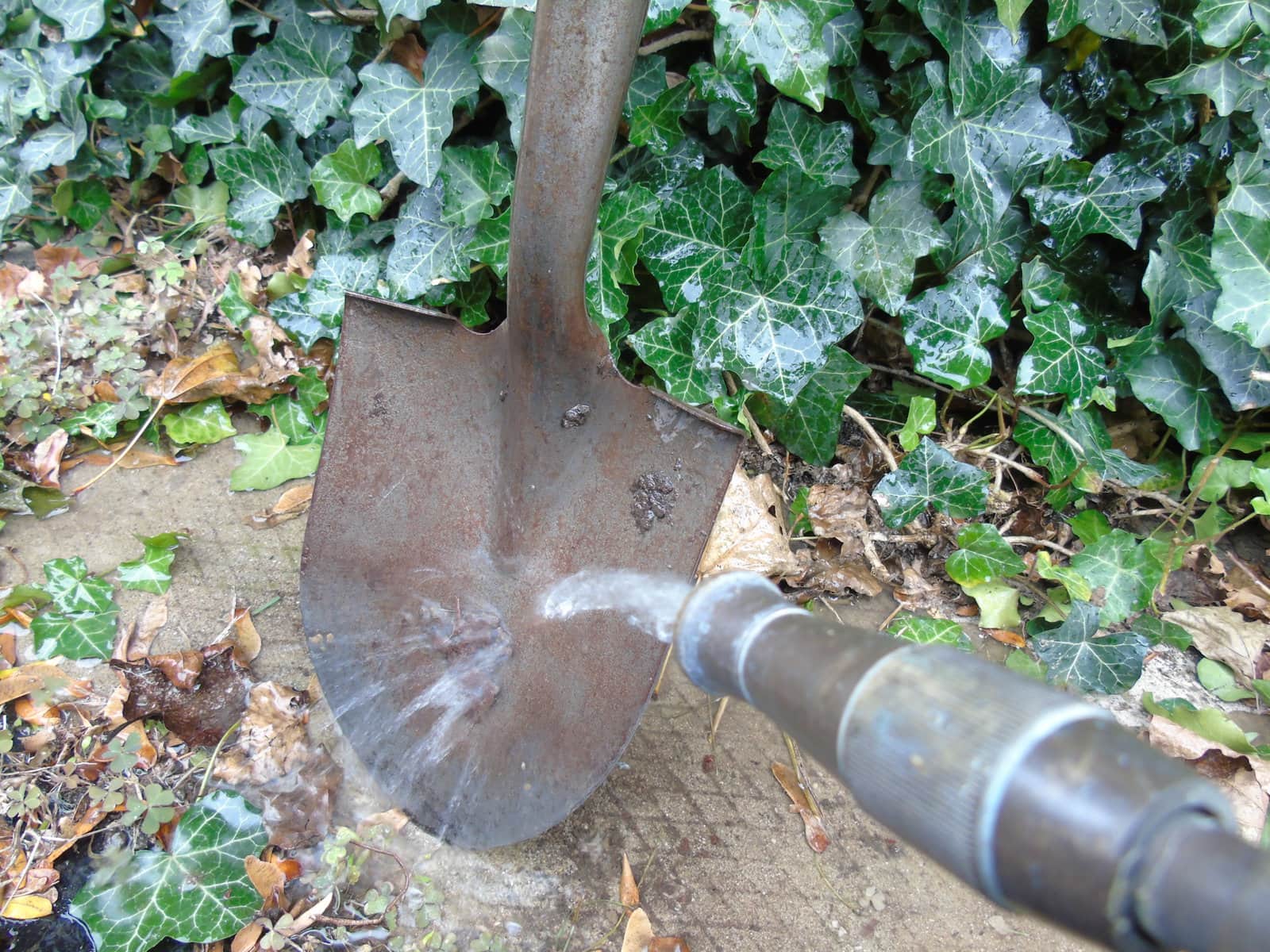How did it get to be November?
Most the leaves are off the trees. It is now dark by 5 o’clock.
Before you know it, the snow will be here. There, I said it – but don’t blame me when it gets here.
The garden season is coming to an end, but here are a few more fall garden chores to tackle before packing up the garden gear.
1. Clean up containers: It is best to remove the annuals, including root balls, in the fall so that any disease or pest problem that you might have had isn’t overwintering and becoming a problem for your new plants next year.
If you compost, you can be cutting up your disease-free annuals and adding to your compost bin. You can also throw the potting soil into garden or composter.
It is a good time to clean you pots as well with a cloth or soft brush and soapy water to kill any pests or diseases that might be present.
2. Shovels, rakes, hoes and garden forks: The first step in cleaning up your shovels, rakes, hoes and garden forks is to wash off all of the dirt remaining on the tools with the garden hose or a bucket of water.
If there is still some dirt remaining after rinsing them off, you may need to use a stiff bristle brush to give it a more thorough scrubbing.
The second step is to take this opportunity to sharpen up the shovels and hoes. It really isn’t that difficult to do it yourself.
You can use either a file, a wet stone or a sharpening tool like the ones used to sharpen pruners to put a good edge on shovels or hoes which will mean not having to work as hard in the spring.
If your shovels, rakes or hoes are starting to get some rust on them, there is a simple way to eliminate the rust by using something that you probably already have in the house.
Place your tool in something like a five-gallon pail or tote and cover the metal part with white or cleaning vinegar.
Soak the tool in the vinegar for 12 to 24 hours depending on how rusty the tool is. You will see that some of the rust will soak right off.
Remove the tool and use a stiff bristled brush or a piece of steel wool to remove the remaining rust.
Once cleaned up you can rub some three-in-one all-purpose oil on the metal and leave it on there throughout the winter.
To keep the tools from rusting over winter, you can also take a large pot or pail and fill it with sand.
Add about one to two cups of vegetable oil to the sand and mix them together.
You then insert the shovel, rake or hoe into the sand/oil mixture, which will coat the metal part of the tools.
Pull the tools out of the sand and leave this mixture on the tools over winter and it will stop rust from forming.
If the wooden handles are feeling rough, causing blistered hands, take a piece of sandpaper and rub it up and down the handle (with the wood grain) several times to smooth it out.
To help the wood from drying out over the years, you can also put some linseed oil on a cloth and rub into the handle.
3. Pruning tools: When it comes to getting your secateurs, shears and loppers ready to be stored, make sure that you wash off any soil that may be remaining on them.
To clean up the blades, use some steel wool (or an S.O.S. pad) to remove any sap or rough spots.
If the blades have become rusty over time, follow the procedure above by soaking the blades in vinegar.
Once most of the rust has come off, use a piece of steel wool, scrub back and forth and the rest of the rust should come right off.
I have also heard that Scrubbing Bubbles toilet cleaner works well for removing rust.
Why not take the time to sharpen up the blades before putting them away for the season.
For bypass pruners, where the two blades bypass each other, the blades are always beveled on the outer facing edge.
Always sharpen the beveled edge and never the flat, inward facing edge.
Once the blades are sharpened, use machine oil (three-in-one oil) and put some oil in all the working parts of the pruners (spring, bolts, screws, etc.). Your pruners are now ready to be stored for winter.
The last thing to remember before storing all your garden gear is to set out that winter shovel hidden in the back corner of the shed.
I think we are going to need them this winter. Again, don’t blame the messenger.
Joanne Young is a Niagara-on-the-Lake garden expert and coach. See her website at joanneyoung.ca.










